Houston - Galveston - Texas Coastal Home Inspections I Coastal Inspector I Infrared Thermography I IRC Code Certified |
||
 |
||||||||||||||||||||
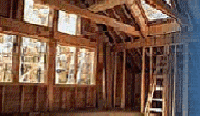 |
 |
|||||||||||||||||||
 |
||||||||||||||||||||
.. |
||||||||||||||||||||
 |
||||||||||||||||||||
 |
||||||||||||||||||||
What You Need To Know About Infrared Cameras |
||||||||||||||||||||
You need at least a 320 resolution infrared camera or it's smoke and mirror. |
||||||||||||||||||||
Infrared Photos.. click here |
||||||||||||||||||||
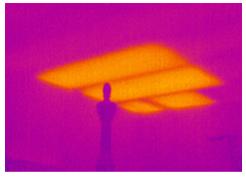 |
||||||||||||||||||||
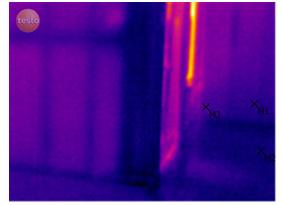 |
||||||||||||||||||||
Thermal Image Scanning Infrared Thermography produces images of invisible heat energy emitted from objects and sytems in the home and allows us to measure it. Thermal imaging helps to diagnose the problem rather than merely identify symptoms. The changes can be subtle or dramatic but with the incredible thermal image scanning technology we see things that wouldn't be able to be seen with the naked eye in a typical home inspection. We greatly exceed the most bought low end 80, 120 or 140 resolution cameras with a 320 x 249 camera. (The less pixels the less you can see so avoid any camera with less than 320 x 249). see sidebar Residential Thermal Inspections Our infrared camera offers a non-invasive means of monitoring the condition of buildings providing on-site high-resolution thermal imagery, revealing potential structural and moisture issues as well energy efficiency issues.
Infrared Thermography is not x-ray imaging. It reads the surface temperature of materials caused by underlying heat or cold and forms a picture-like image formed of temperatures. Infrared is also used for body scanning as well as breast thermography by medical professionals including vetenarians. Thermal loss such as missing insulation results in higher energy costs. |
|||
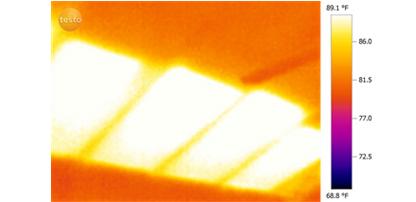 |
|||
The image above shows insulation batts missing from a Galveston townhomes' vaulted ceiling. This wall and ceiling faces the Gulf so there is significant heat gain into the living area to affect the cooling of the interior. In the summer it's like having a built-in heat radiator.
The above March 2011 image of a noteable Houston production builder's home by the Woodlands that was put up for sale by its owner 1-year after it was built. The dark spots are water inside the wall. The detailed inspection along with real time and infrared photos had the builder come back and perform significant repairs. When you are with me on an inspection you see what I see. Had this gone unnoticed the damages would have been extensive. The cause was the typical missing flashing at the steel lintels supporting the brick. This is usually overlooked by the builders' private inspectors, the city, the superintendent and any quality control.
In the infrared world, everything with a temperature above absolute zero emits heat so the greater the heat the greater the IR detects. An infrared camera measures the non-visible Infrared light emitted by all objects. This allows us to visualize minute gradients (+-2° C or 2%) in the surface temperatures of materials. However, all material dries out so for moisture detection it is best to use this service after a period of heavy rain or if you suspect an active plumbing leak or wetness. Infrared Thermograhy will not detect previous wet areas that have dried out. How can Thermal Infrared be useful? • Moisture Detection in Walls and Ceilings - Thermal imaging is a great tool that helps to identifying water damage in walls, floors, and ceilings. By detecting the difference in temperature between a wet area and the surrounding dry areas thermal imaging can help detect moisture issues that would not be visible during a limited visual home inspection. It is also great at identifying areas where the insulation contractor failed to insulate adequately or if a building has insulation at all. In the image below the dark area in the center of the image is wetness inside a outside wall corner of the breakfast and family room exacerbated from a lack of gutters. This foreclosure was "staged" with new paint but poor drywall and trim repair to hide the damage. (We always confirm suspected areas with a moisture meter).
• Energy Audits - We do not currently specialize in performing the simple energy audits (many can do these by themselves via *common sense) as a separate add on service, but thermal imaging is a great tool to help homeowners save money. Heat loss and/or cold air influx can be detected and corrective actions can be taken to help improve the energy efficiency of residential and commercial structures. Missing insulation is easily found with thermal imaging. Once the energy wasting areas are identified, then changes can be made to make a dramatic difference in energy consumption which means less money out of pocket. • Electrical Inspections - Loose or dirty electrical connections and other electrical anomalies can cause power outages and possible fires. We can inspect the electrical panels and receptacles to detect issues before there is a costly outage. Thermal imaging can detect hot spots in the electrical system not visible to the naked eye which may be a precursor to a larger issue. The resulting report can be a great aid for the repair electrician hired to address the identified issues. • Plumbing Inspections - Water leaks from the plumbing system often leak undetected until major damage has occurred. We can scan in, under, and around plumbing fixtures in the home to determine if there is active leaking going on. Since this tool is not a moisture meter we will use it to find heat anomalies and then pursue the issue further to attempt to determine the source and cause of the leak. Thermal image scanning can detect temperature anomalies in the plumbing system not visible to the naked eye which may be a precursor to a larger issue. The resulting Thermal Image Scan report can be a great aid for the repair plumber hired to address the identified issues. • Wood Destroying Insect Activity - We do not perform wood-destroying insect inspections. That requires a specialty license and training in Texas. • Roof Inspections - If you have a leak then call us first. We may be able to save you a substantial amount of money on flat roofs. Thermal imaging can be used to detect the location of the leak and mark the affected area so that repairs can be made to the leaking area. Obviously, if the roof is older then you should forego the thermal imaging and invest in the needed new roof. Thermal imaging on flat roofs are done at night and typically require a two person team for significant personal safety caused by night-blindedness of using the instrument and secondly for the second person to mark the areas of the roof for the repair personnel. What Thermal Image Scanning is NOT MOISTURE METER - Infrared thermal imaging is NOT a moisture meter. It simply identifies thermal anomalies. This device greatly aids in identifying areas that are further investigated by a moisture meter to confirm if moisture is present. Only a moisture meter is a definitive instrument. X-RAY VISION - Infrared thermal imaging is NOT an X-ray vision instrument. It does not provide the user with an immediate ability to see inside walls. Instead, it identifies thermal differences. When it is used in conjunction with other technologies thermal imaging helps to identify issues that are rarely identified during the limited visual home inspection process. RISK ELIMINATOR - Infrared thermal imaging does NOT remove the risks of concealed damage. IR hates sunlight and/or solar reflection. Homes without window coverings that can be closed can be an almost impossible candidates for IR. |
|||
Need a Infrared Thermal inspection in -
North Houston or
Montgomery county
Call Chuck Evans at
(936) 522-8633
Amarillo
Call Danny South at
(806)356-8703
Dallas/Garland
Call Aaron Miller at
(214) 616-0112
Galveston County, Clear Lake/NASA areas, Seabrook, Alvin,
Pearland, League City
Call Jim Hime at
(281) 337-4052
What's happening behind
your stucco? Click here
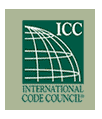
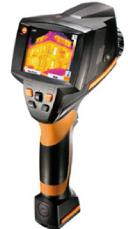 This is
This is 

